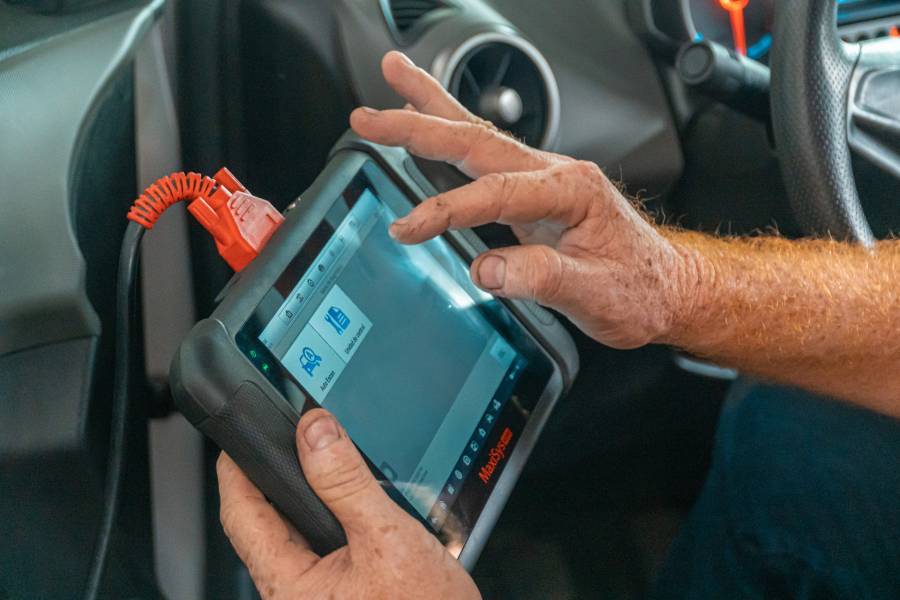Quick Navigation
Check rear park aid is a great feature in modern cars that increases safety and saves money.
When you avoid minor accidents, you also prevent repairs that cost money.
So, it is an excellent feature to use when we are about to park our car. But, like every other gadget or car feature, it comes with its challenges.

You will get to know everything about check rear park assist, its challenges, and solutions as you read on.
What Is A Rear Park Aid?
A rear park aid is an optional functionality designed to provide the necessary support for drivers when they are reversing or parking.
This mechanism functions through a sensor that detects obstacles behind the car and signals the driver through a warning sound.
The rear parking sensor is located at the back bumper.
And a low beep sound from the rear speakers serves as the signal, but if your car is equipped with a safety alert seat, you will feel a pulse on both sides twice.
What Does Check Rear Park Aid Mean?
Check rear park aid is a warning signal displayed in the message center to notify the driver that the rear park assist system is disabled.
So, for all vehicles with a park aid mechanism, the system must be enabled to get rid of the check rear park aid notification message.
Where Does The Check Rear Park Aid Appear?
The notification always appears on your vehicle’s dashboard, too visible for you to miss.
To ignore or make the message go away, press the button on the screen, and it will disappear.
What Is The Difference Between The Rear Park Aid And The Rear Sensor?
The rear park aid and the parking sensor are two different mechanisms though closely related; they have separate functions.
The rear park aid relies on the parking sensor to function correctly to bring your car to a packed position.
Also, the parking sensor detects objects or obstacles close to your vehicle, whether at the front or rear end.
How To Enable Or Disable The Rear Park Aid?
- Open the settings displayed on the dashboard: Press the up or down button on the dashboard until the settings appear, and then press OK.
- Select Driver Assist: After opening the settings, scroll to and select the driver assist. Then, press OK.
- Select the rear park aid: After opening the driver-assist, scroll to find the rear park aid option on the screen. Then, press OK.
- Select on or off: After selecting the rear park aid option, you can select on to enable and off to disable.
Common Problems That Affect The Rear Park Aid
Though, the challenges face by the rear park assist are more external than internal, which means the system itself is reliable.
Here are some of the common problems of the parking aid.
False alert indicating objects are closer than they appear.
This false alarm can affect the driver because he might operate from that notification.
This false alert is mainly caused by the weather, rough driving, damaged bumper, etc.
Check rear park aid.
The rear park aid could go off, and this message will appear on the screen, indicating that something is wrong.
It might be a false alarm when this happens because the sensor is damaged or blocked.
What Causes Rear Park Aid Problems?
Numerous causes lead to the parking aid malfunction, triggering a check rear park aid response. Below is a comprehensive list of these causes:
Debris
When driving off the road, debris like mud and dust can cover the sensor and lead to false alarms when detecting the object’s actual distance.
Weather Condition
It might trigger a check rear park aid in extreme weather conditions like snowfall and rain because the sensor might stop working.

Bad Bumper
Since the sensors are located on your vehicle’s bumper, they will malfunction or stop working if the bumper is damaged due to an accident.
And, this might need the services of a technician to fix this problem.
Washing Your Car
While washing your car, moisture can get trapped in the sensor, obscure its functionality. So, ensure that you wipe your vehicle thoroughly after washing.
High Speed
Your car is not allowed to exceed 8kmph or sometimes 5kmph; else, the sensor will stop working. When the rear park aid is on, try not to use high-speed driving.
Bad ECU
The car ECU is malfunctioning when you have taken every external precaution and are still getting the check rear park aid message.
This can be fixed by visiting an expert for proper examination and fixing.
Tow Trucks
It is common to get the check rear park aid message while towing your car.
The parking assist system is disabled, and the rear check park assist message will pop up.
What Are The Solutions
The best solution is to seek the counsel of a technician to ascertain and fix the cause of the problem.
But before you do that, there are some DIY moves you can make that might save you repair costs.
- Thoroughly clean the bumper of your car after driving on rough roads with mud and dust.
- Try turning the rear park aid button on and off. It might help reset the system.
- You can also turn the ignition on and off. It can also help reset the system.
- You can choose to ignore the warning message by pressing the odometer stem.
How To Identify A Bad Parking Sensor?
- If you constantly receive false alarms of impending obstacles where there are none, then that’s a good sign that the sensor needs attention.
- When the guidelines on the screen are misguiding you or not displaying usually, you should consider checking the sensor.
- The appearance of check the rear park aid message while it is turned on in the settings.
- You can inspect it yourself to see if they are damaged, especially after being hit from behind.
How Much Is It To Fix Check Rear Park Aid
The cost to change the parking sensor is between $500 to $1,300 per bumper. Though it is a bit expensive, it hardly gets damaged except for accidents.
And, if you cannot afford it, then disabling the rear park system can be activated.
Important Things To Know
- The rear park aid sensors are not equipped to detect pedestrians, so always ensure that you check before you reverse.
- The rear park assist is designed to detect obstacles, but it will not take control of your steering wheels or brakes. You will have to do that yourself immediately after you hear the alarm.
- This feature is not equipped to park your cars, though there are newer technologies that afford that functionality. And that feature is called the active park assist.
Conclusion
Nothing they say is free, and comfort does come with its prize.
If your car does not have the parking assist, there would be no need to worry about checking the rear park aid notification.
These challenges are negligible for the comfort and ease of parking your car. Also, the safety and prevention of damage is very vital strength.
This article has explained everything about the check rear park aid. And to get more related information, check here.

Patrick started his love affair with cars in his childhood. Over the years, he claims a sturdy hold on his driving skills, along with a thorough understanding of cars. We can expect some interesting, holistic, and pleasurable blogs with his flair for writing and his love for cars.
Being a car enthusiast, Patrick has experience comprising of two decades in which he has ridden some of the meanest and strongest machines in the automotive industry. His previous avatars include an automotive professional, photographer, and journalist, and you will certainly experience the roundness of experience in his piece on this site.
In his second decade of reviewing cars and analyzing tools, Patrick is all set to give you convincing, reliable, and the latest information regarding what’s happening in the automotive industry. Currently, he owns a BMW Z3 but cannot get his eyes off Aston Martin DB5. He is a car enthusiast; he loves cooking and listening to music, especially jazz. Here are some of the pieces written by our ace author.




![How To Check If Your Car Mileage Is Genuine? - [6 Best Ways] How To Check If Your Car Mileage Is Genuine? - [6 Best Ways]](https://carsupercare.com/wp-content/uploads/2020/09/How-to-Check-if-Your-Car-Mileage-is-Genuine.jpg)

![How to Check Car Tire Wear [Best Metods] How to Check Car Tire Wear [Best Metods]](https://carsupercare.com/wp-content/uploads/2023/01/Check-Tire-Wear-3-150x150.jpg)